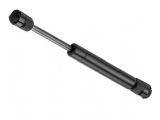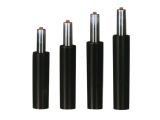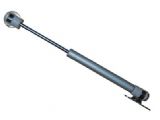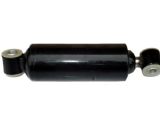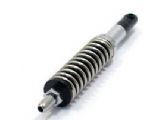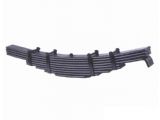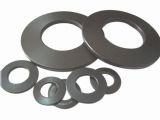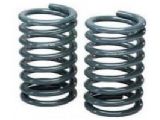Compression Springs are open-coil helical springs that offers resistance to a 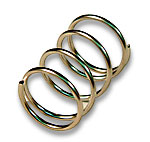
compressive force applied axially.Helical compression springs are used to resist
applied compression forces or to store energy in a push mode.Compression
springs have the most common configuration and are most commonly used in automotive, aerospace and consumer applications. Most compression springs are a straight cylendrical spring made of round wire. Ston, a manufacturer of compression springs produces a variety of compression types, shapes, and specific specifications.
Compression Spring Types: Conical Compression, Barrel, Hourglass and Cylydrical shapes and may have various spacing or no spacing at all between coils.
Ends:There are four basic types of compression spring ends as shown below. The particular type of ends specified affect the pitch, solid height, number of active and total coils, free length and seating characteristics of the spring.

How to Determine Rate For Compression Springs
Rate which is the change in load per unit deflection, may be determined by the following procedure:
1. Deflect spring to approximately 20 percent of available deflection and measure load (P1) and spring length
(L1).
2 . Deflect spring to approximately 80 percent of available deflection and measure load (P2) and spring length
(L2). Be certain that no coils (other than closed ends) are touching L2.
3. Calculate rate (R) lb./in. (N/mm)
R = (P2 - P1) / (L1 - L2)
Material:
• Music Wire per ASTM A228, DIN 17223 or JIS-G-3522
• Stainless Steel Type 301/302/304 OR Type 316 per ASTM A313, DIN 17224,or JIS-G-4314
• Oil Tempered MB per ASTM A229, DIN 17223
• Oil Tempered Chrome Silicon per ASTM A401, DIN 17223
Special material are also available upon request.
In Ordering Give the Following Information as Completely as Possible:
• Free Length, Maximum, Minimum.
• Controlling Diameter, Outside Diameter Maximum. Inside Diameter Minimum. Pitch Diameter. Works Inside
(Dia. Hole). Works Over (Dia. Shaft). 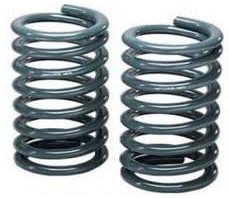
• Number of Coils.
• Wire Size. Decimal size if possible. Material, Kind and Grade.
• Loads at deflected positions.
• Style of Ends, (see illustrations). Right or Left Hand Wound.
• Finish. Plain unless otherwise specified.
• Maximum Solid Length.
• Frequency of Compression.
